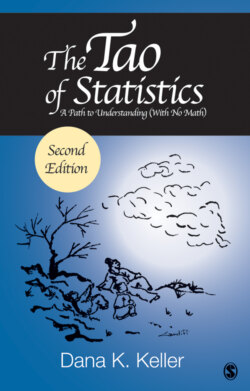Читать книгу The Tao of Statistics - Dana K. Keller - Страница 13
5. Data Structure—Levels of Measurement
ОглавлениеWhat can be built?
Ask the ground
Turn over rocks
Dig in the dirt
The grounding for statistics is the level of measurement of the data. Some statistics are appropriate for some levels of measurement; others are not. This is an area where one needs to understand the deeper structure of the data to know which statistics would be meaningful. For example, the data’s level of measurement limits the choice of the most often-used statistic—the average, what statisticians call the central tendency. There are three common choices of averages: the mean, median, and mode (with somewhat esoteric versions within each). These different types of averages are not equally appropriate for data at different levels of measurement. Specific levels of measurement and the impact of each on the choice of statistics will be discussed soon.
The topic sounds complicated, but is not. Once you understand how data differ according to their level of measurement, you will quickly grasp which statistics are appropriate for a given set of conditions. Fortunately, many statistical techniques have options that can account for the various levels of measurement.
Through the questions being asked by the high school principal and the director of public health, we will encounter four of levels of measurement (i.e., nominal, ordinal, interval, and ratio, to be explained next) in their various data sets or from potential survey responses. They, and we, will accommodate these levels of measurement as we progress through this book.
Important to getting the statistics correct is the recognition and accommodation of each variable’s level of measurement. Even researchers with decades of experience occasionally will be embarrassed by having used a statistic in a way that was inconsistent with the level of measurement requirements of that statistic. Though an issue with level of measurement rarely is a knockout punch, these issues tend to be varyingly important limitations on the confidence that researchers (should) have in their results.
